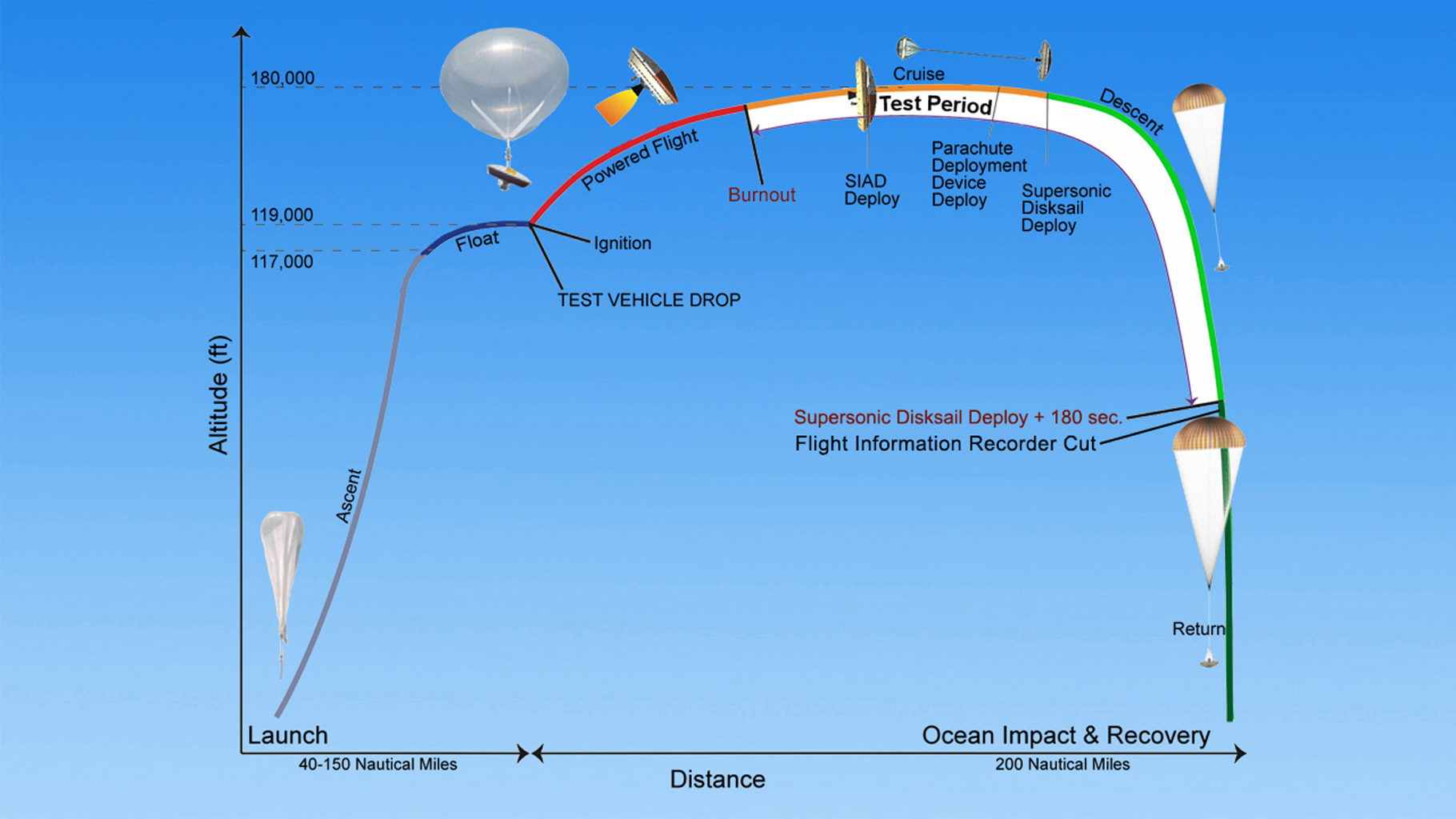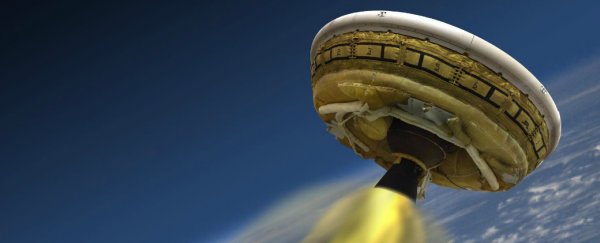**Update: The launch finally happened on Monday, June 8 at 1.30pm (EDT). Find out more here.**
NASA is planning to test fly an enormous flying saucer spacecraft over Hawaii on Monday, and if all goes to plan, it could end up taking humans to the surface of Mars by 2035.
The spacecraft is called the low-density supersonic decelerator (LDSD), and NASA is planning to take it around 32 km (20 miles) above Earth's surface before releasing it, to see if it can safely land at a speed that's safe enough for a precious cargo of astronauts. And the best part is that you can watch the whole thing below, live from the comfort of your own home.
"You get to see all the same video I do, at the same time I do," project manager Mark Adler said in a NASA press release.
This is the second test run of the LDSD. Last year's trial was a success in all ways but one - the parachute that will help slow down the spacecraft pretty much fell apart shortly after it was released. But they've now created a new supersonic parachute that they hope will be up to the task.
"This year's test is centred on how our newly-designed supersonic parachute will perform," said Adler. "We think we have a great design ready for the challenge, but the proof is in the pudding and the pudding will be made live for everyone to see.
The test flight was originally scheduled for Tuesday, June 2, between 1.30pm and 3pm EDT, blasting off from the US Navy's Pacific Missile Range Facility in Kauai, Hawaii. But due to bad weather, the release has been pushed back several times, finally to Monday, June 8 at 1.30pm EDT (3.30am on Tuesday Sydney time and 6.30pm London time). The window is open to test the spacecraft up until June 12, so if the bad weather and high winds continue, the launch will continue to get pushed back.
So what does this trial involve? First of all the spacecraft is transported 32,000 metres (120,000 feet), high up in Earth's atmosphere by a giant balloon. Its rockets then kick in and take it even higher, up to 54,800 metres (180,000 feet). At this point, a giant inflatable doughnut-shaped tube inflates around the spacecraft, puffing the structure to a larger size.
By increasing its size, the spacecraft can slow itself down from 4,184 km (2,600 miles) to around 2,414 km (1,500 miles) - twice the speed of sound, which is when the parachute launches:
 NASA/JPL-Caltech
NASA/JPL-Caltech
This giant parachute then slows the spacecraft down further, hopefully taking it down to a graceful splash landing in the Pacific Ocean. We can only imagine that this would put on a pretty spectacular show for those who manage to get a glimpse of the LDSD falling from the sky.
For the rest of us, we can watch via the live stream below from 1.30pm EDT on Monday, June 8 (3.30am Tuesday AEST and 6.30pm BST). Right now there's a recorded conference being played, but on the launch day, that will be taken over by live commentary. Find out more updates on the time and date of the launch over at NASA, and don't forget to watch the skies.
Broadcast live streaming video on Ustream
